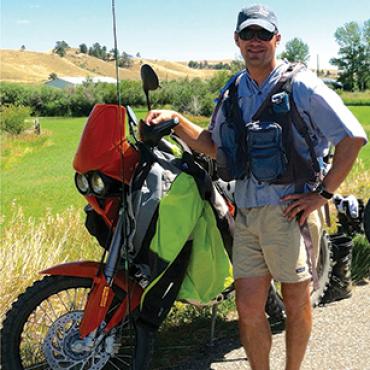Land of Lakes
Within two hours of Bozeman are two reservoirs and a lake that can provide an alternative to overcrowded rivers. All are fishable via driftboat or raft, pontoon or paddleboard. Here’s the skinny to get you started.
Hebgen Lake
Drive past Big Sky on Hwy. 191 until you reach the Yellowstone Plateau—you’ll know it when you see it, as you emerge from the national forest and descend upon a vast, flat expanse, thick with lodgepole pines. At this point you can either turn right on Hwy. 287, which runs along the north side of the lake, or continue on Hwy. 191 into the town ofWest Yellowstone. I recommend the latter, with a quick stop at Blue Ribbon Flies for a local report and a handful of irresistible patterns. To fish the south side of the lake, head west out of West Yellowstone on Hwy. 20 to Denny Creek Rd. Make a right, and head to Lonesomehurst Campground, where you can launch your vessel and camp. At Hebgen, think mornings and evenings with gulpers feeding on midges, callibaetis, and tricos. Dry-fly fishing for these marauding monsters is the joy of Hebgen in summer, so expect long leaders with 5-6X tippet, and lead rising fish with accurate casting. (Straighten your leader and tippet after the cast!) Hefty rainbows and browns averaging 17-19 inches are the norm.
Quake Lake
Not far below Hebgen, along Hwy. 287, is a naturally formed lake that acts as an eerie headstone; in 1959, 28 souls were buried by rubble when an earthquake caused a massive landslide, damming the Madison and creating Quake Lake. Quake is a very different experience from Hebgen. It’s slightly more remote, with only one boat ramp, which may leave you looking over your shoulder should a wandering grizzly happen to stroll by. It’s possible to see some gulper action on Quake when the wind comes down in the evenings, especially near the inlet, but throughout the day success comes from long fluorocarbon leaders tipped with 4-5X and a callibaetis nymph fished across the relatively shallow flats or along rock ledges. Late in the summer, lucky anglers may move some fish on hoppers along the leeward side of grassy banks. Streamer fishing in the twilight or even mousing can produce some exceptional fish. Expect large browns in these waters and stay away from the outlet, where a nasty set of Class V rapids await the doomed soul who spills over.
Harrison Lake
For a completely different experience, venture about an hour west of Bozeman to Harrison Lake. The lake’s namesake hamlet, Harrison, is about a half-hour south of Three Forks. Like Hebgen, Harrison Lake is actually a reservoir used for agricultural purposes. There’s decent fishing in the bay just south and around the corner from the boat ramp, but the best fishing can be found in the canyon to the northwest toward the dam, where you can ply the depths along rocky banks with chironomids behind a long fluorocarbon leader. Another popular tactic in Harrison is to work these same banks with crayfish patterns for cruising browns. The most effective approach is to stake-out a feeding area, cast, and let your fly sink to the bottom. Then wait until you spot a trout moving into the area before bringing your crayfish imitation to life. You can use this same approach blindly, but sight-fishing is more fun. Later in the summer, hoppers can also be effective here. Beware of rattlesnakes both in and out of the water—the native reptiles are abundant in the area. Also, try to avoid the weekends, unless you enjoy sharing the water with a horde of locals on wave-runners and water-skis. (You may dodge these recreationalists if you fish early in the morning.)

If you get into the habit of fishing these or other area lakes, consider registering your raft or driftboat and buying an electric or small gas-powered motor. These work great to get you around and could save your day if the wind comes up. Be wary of rising winds on all of these bodies of water. Without the help of a motor, the winds can leave you stranded on the far side of the lake until nightfall when they finally subside. Finally, bring some binoculars to spot rising fish and the insects they’re feeding on.
Jimmy Lewis has been fishing and guiding in southwest Montana for nearly two decades.












